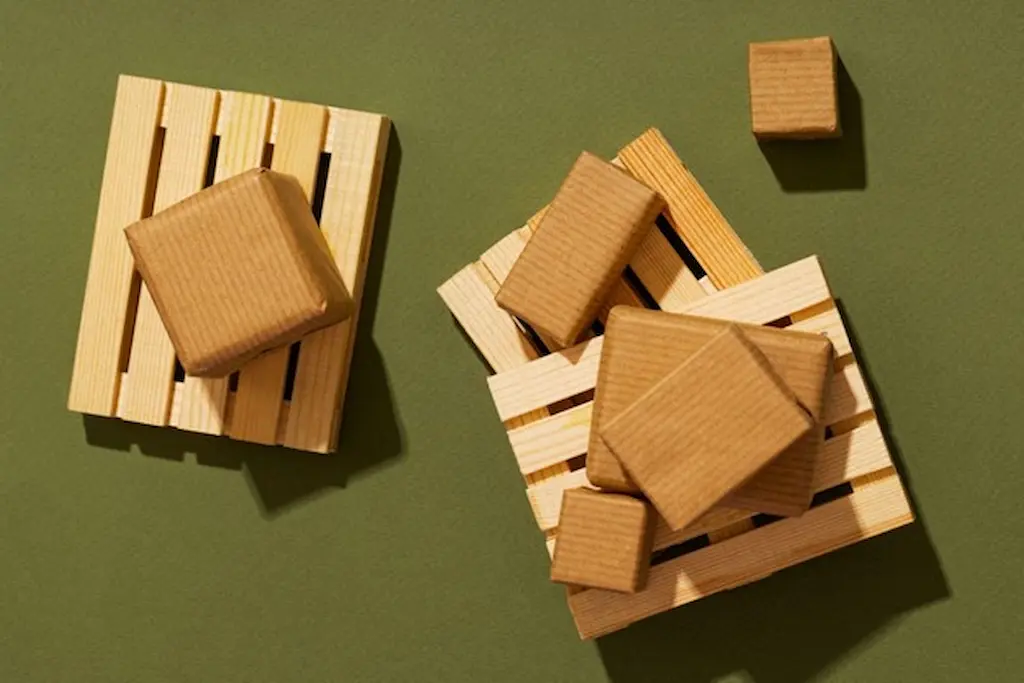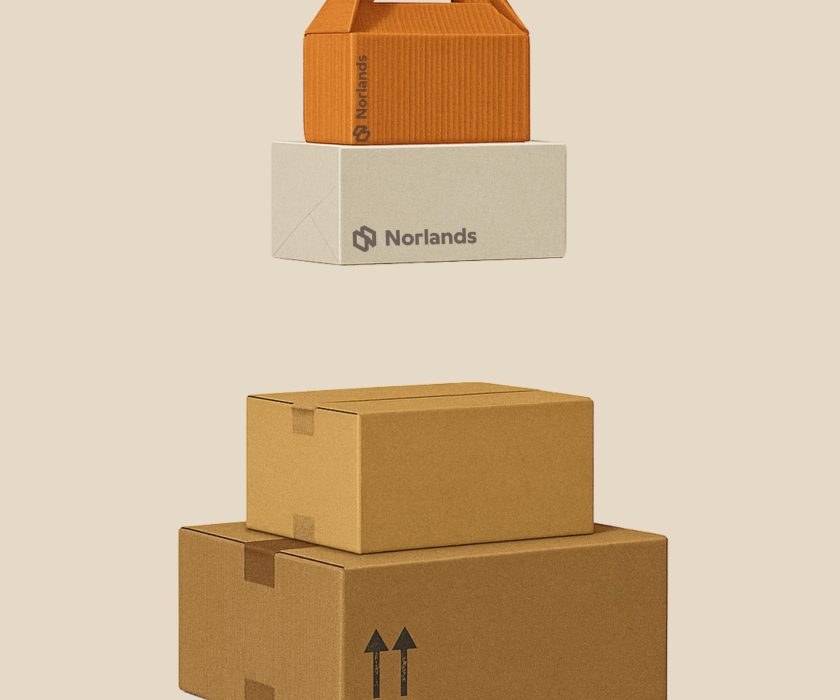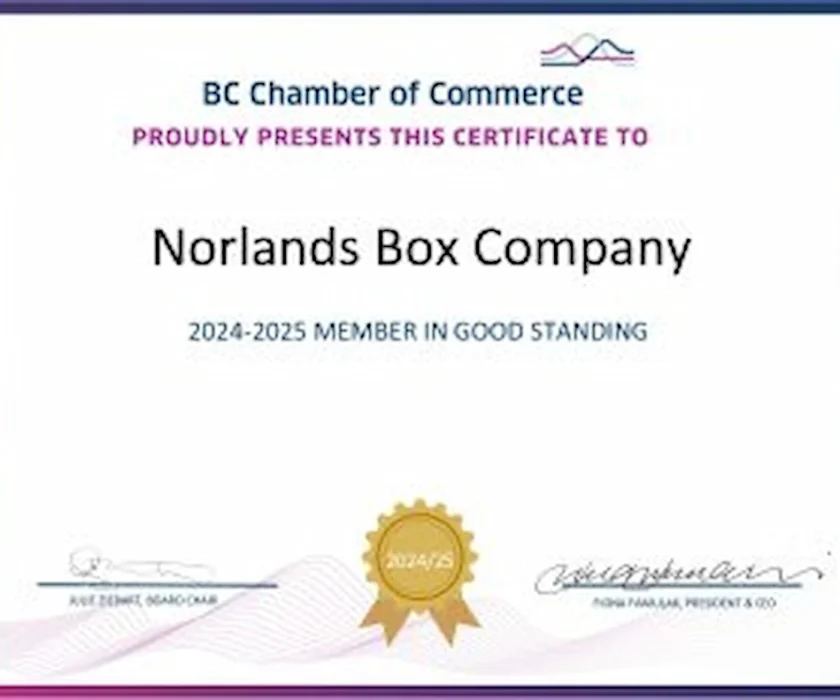
Corrugated vs. Crates vs. Plastic Containers: Why Smart Brands Are Trading Wood and Plastic for Paper Power
Introduction
If packaging had a gym membership, corrugated would be the one doing functional training, light on its feet, strong where it counts, and built for real-world performance. Wooden crates and plastic totes had their era, but today’s supply chains move faster, greener, and smarter. Here’s the side-by-side on cost, weight, and environmental impact, so you can ship with confidence (and look good doing it).
- Cost: Corrugated wins on material + freight + storage. Customization is cheaper, too.
- Weight: Corrugated is dramatically lighter, which lowers shipping costs and is easier on teams.
- Environment: Corrugated is renewable, widely recycled, and optimized for right-sizing. Wood and plastic can last, but often struggle with end-of-life and transport emissions.
Quick Comparison
| Factor | Corrugated Packaging | Wooden Crates | Plastic Containers |
| Material Cost | Low to moderate; economical at scale | High; material + carpentry | Moderate to high; steep upfront |
| Customization | Easy, fast, low MOQs; print-ready | Slower; tooling + labor | Mold/tooling dependent; higher MOQs |
| Weight | Very light | Heavy | Moderate |
| Freight Costs | Lower (dimensional + actual weight) | Higher due to mass | Moderate |
| Storage Efficiency | Ships/stores flat | Bulky; fixed volume | Stackable but rigid |
| Protection | Engineered strength (ECT/BCT) + inserts | Very robust but overbuilt | Durable, impact-resistant |
| Sustainability | Renewable fiber, high recycled content, widely curbside-recyclable | Reusable; but heavier footprint, harder to recycle | Reusable; recycling varies, fossil-based |
| Branding | Full-surface print, tactile finishes | Limited | Limited without labels/sleeves |
| Lead Times | Fast | Slow (fabrication) | Slow (molds) |
Cost: Save on More Than Just the Box
1) Material & Manufacturing: Corrugated is efficient to produce and easy to customize without expensive tooling. Need a one-off size? A short run? Seasonal branding? Corrugated says, “Say less.”
2) Freight: Weight is money. Lighter boxes = lower shipping costs. Corrugated also lets you right-size the pack so you’re not paying to ship air.
3) Storage & Handling: Flat-packed blanks take up minimal space. Your warehouse breathes. Your operations team smiles. Crates and rigid plastics? They demand square footage even when the space is empty.
4) Damage Prevention: Engineered board grades and smart inserts balance strength with weight. When your unbox rate goes up and your return rate goes down, that’s real savings.
Bottom line: Corrugated optimizes the whole cost picture materials, freight, storage, handling, and damage.
Weight: Light Work, Heavy Lifting
Wooden crates are beasts in a good way for industrial machinery, in a bad way for everything else. Plastic containers are lighter than wood, but still rigid and often oversized.
Corrugated is the featherweight champ:
- Easier manual handling = safer teams, faster turns.
- Lower actual and dimensional weight = happier carrier invoices.
- Modular inserts (pads, partitions, foam alternatives) give you strength only where you need it.
Environmental Impact: Ship Clean, Sleep Clean
Renewable & Circular
Corrugated is made from renewable fiber, typically with significant recycled content, and it’s widely curbside-recyclable. That’s a genuine circular loop, not wishcycling.
Right-Sizing = Fewer Emissions
Dial in your box dimensions and you’ll reduce filler, improve truck density, and cut transport emissions. Crates and rigid bins often lock you into oversized spaces.
Reusability vs. Recyclability
- Wooden crates can be reused, but they’re heavy to move/repair and rarely recycled at the end of life.
- Plastic containers shine in closed loops (think: in-plant totes), but for outbound shipping, returns are a headache, and recycling depends on material type and local infrastructure.
- Corrugated supports both reuse (multi-trip designs) and easy end-of-life recycling.
Ink & Adhesives
Modern water-based inks and recyclable adhesive systems keep corrugated eco-forward and brand-ready without compromising recyclability.
When Crates or Plastics Still Make Sense
We’re corrugated superfans, but we’re also realists:
- Wooden crates are best for ultra-heavy, high-value, single-trip freight (industrial equipment, large art, odd geometries).
- Plastic containers are strong in closed-loop systems where totes come back (automotive lines, internal kitting), or where sanitation cycles are frequent.
For 80–90% of consumer goods and retail-bound shipments, corrugated is the cleaner, leaner, smarter choice.
Design Moves That Max Out Corrugated
- Right-size the footprint: Reduce DIM weight and filler.
- Choose the right board grade: Match ECT/BCT to your product, not your fears.
- Add engineered inserts: Paper-based partitions, pads, or molded fiber instead of foam.
- Brand the full canvas: High-impact print, smart unboxing, QR for post-purchase journey.
- Plan for end-of-life: Recycle-friendly coatings and minimal mixed materials.
The Norlands Take
At Norlands Box Company, we help brands transition from wooden crates or rigid plastics to corrugated systems that:
- Lower total landed cost
- Cut freight and warehouse spend.
- Improve safety and speed on the floor.
- Reduce environmental footprint
- Elevate the customer unboxing moment.
Want a side-by-side for your SKU mix board grades, inserts, and projected cost/emissions savings? We’ll build it out and show you exactly where the wins are.
Let’s make your packaging work smarter.




